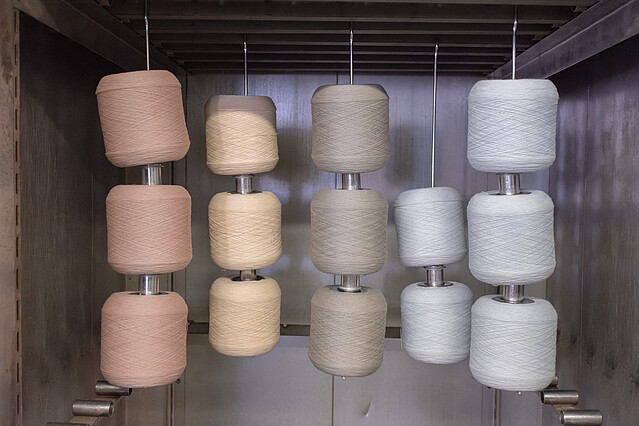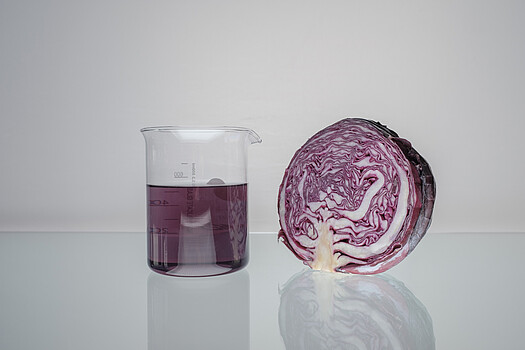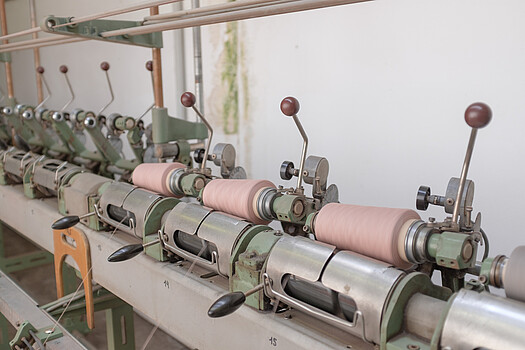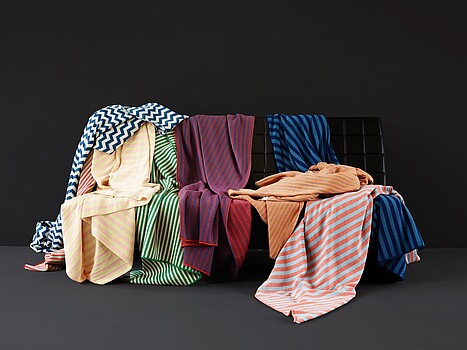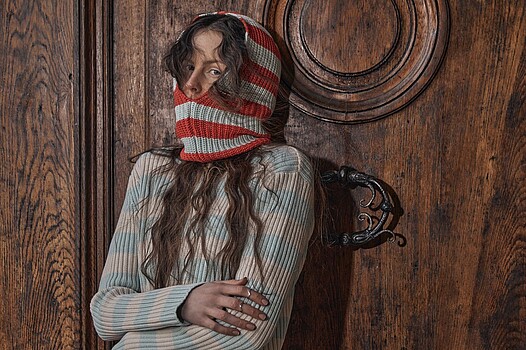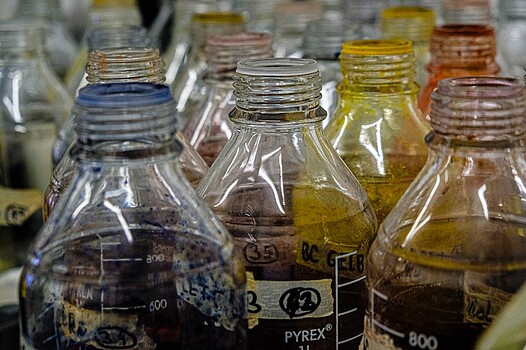Vienna in Colour – How the City Is Rewriting the Dye Playbook
September 23, 2025|MP
What does red cabbage have to do with your favourite T-shirt? More than you might think. Vienna is pioneering a new relationship with colour – merging local resources, craftsmanship and biotechnology to turn fabric dyeing into a sustainable practice.
Vienna is known for its colours. The warm Schönbrunn Yellow of the imperial palace is a classic of the Austrian baroque and even has its own hex code. So-called “Otto Wagner green” distinguishes the architect’s historical U-Bahn stations dotted across town. And everyone’s favourite Manner wafers have been wrapped in the same signature pink for over 135 years – now protected as an official Pantone shade. But today, new technologies mean new hues are on the rise - from the soft rose of avocado pits to the ochre hues derived from Japanese knotweed.
Dyeing is resource-intensive, relying on synthetic pigments and global supply-chains, with impacts far beyond fashion. It literally stains our architecture, packaging, industrial products, everyday design objects and much more. Now, Vienna’s creative entrepreneurs are reimagining the industry with local, circular and collaborative approaches. From transforming organic by-products to developing natural dyes and deriving pigments from bacteria and fungi, they are showing how dyeing can become a truly sustainable process.
Biofabrique Vienna: Wiener Farben – Colour From the City Itself
What if colours could be cultivated from a city’s leftovers? That’s the idea behind Wiener Farben – the new edition of Biofabrique Vienna, an artistic circular-economy initiative of the Vienna Business Agency. The project turns organic by-products – from food production residues and unavoidable restaurant waste to invasive plants – into vibrant dyes and pigments. Red cabbage leaves, avocado pits or even Japanese knotweed become the unlikely building blocks of a distinctly Viennese colour range.
At the heart of the project lies a bioregional approach – colour is seen as part of the local material cycle, shaped by what grows, flows and is consumed in and around the city. Designers, scientists and industry players work side by side – combining experimental methods with practical production capacities. The result is a palette that reflects Vienna’s character – diverse, site-specific and vibrant rather than industrially uniform.
The first dye samples will be presented in a showcase at Vienna Design Week 2025, marking the start of a year-long joint research project by the University of Applied Arts Vienna, the University of Art and Design Linz and TU Wien. Together, they will explore how overlooked local resources can become the foundation for ecological dyes – with implications not only for the textile industry but for the development of new materials across the creative industries.
Färberei Fritsch & rudolf Vienna – Heritage Meets Innovation
In the South of Vienna, Färberei Fritsch is keeping a rare craft alive while pushing it into the future with colourants that are bio-based and biodegradable. One of the last yarn dyehouses of its kind in Europe, it has been working with natural colours for over two decades – proving that centuries-old techniques can still fuel innovation.
In close collaboration with Färberei Fritsch, the fashion label rudolf Vienna demonstrates how natural dyeing can shape contemporary design. The label sources all of its yarns from the dyehouse for its knitwear collections – dyed with colours obtained from sources such as indigo, cochineal or weld. “From the beginning, the goal of rudolf was to make covetable, high-quality, long lasting pieces exclusively dyed with natural dyes,” says founder Antonia Maedel, who also works at Färberei Fritsch. The collections show that natural colours do not have to mean muted tones – they can be vibrant, luxurious and modern.
As a partner in the Wiener Farben project, Färberei Fritsch is also exploring how natural colourants could move beyond textiles – from inks to varnishes – opening up new possibilities for the creative industries. While interest in natural dyes is steadily growing, Maedel points out that challenges remain: the dyeing process is slow and meticulous, based on the interplay of fibre, mordant and dyestuff, and only certain shades can be achieved on natural fibres. Vienna offers a fertile ground for this work, with strong support for small businesses and a thriving network of creative and research partners.
Vienna Textile Lab – Biotechnology as a New Source of Colour
The Vienna Textile Lab is rethinking what colour should be made of. Instead of petrochemical pigments, the lab creates dyes from microorganisms – bacteria and fungi cultivated as living factories through fermentation. This process is clean and resource-efficient, requiring less water, energy and land than conventional dye production and avoiding toxic chemicals or heavy metals. The result is high-performing, biodegradable pigments that open new possibilities for textiles and beyond – from fashion to packaging, coatings and inks.
“Curiosity alone isn’t enough. Now, the question is: what should things be made of?” says founder Karin Fleck. That question drives their mission to replace high-impact materials with biological alternatives. In Vienna, the lab works closely with universities, research institutions and industry partners, using the city’s strong innovation ecosystem to scale their work – and showing how biotechnology can reshape the future of colour at its very foundations.
Vienna’s colour innovators are showing that sustainability and beauty are not opposites, but two sides of the same idea. By drawing colour from the lived environment – from food by-products to local plants to microscopic organisms – the city creates a palette that is rooted in place yet forward-looking. These new methods reconnect colour with its origins, shorten supply chains and build bridges between craft, science and design. In doing so, Vienna colours itself from its own cycles – and offers a model for how cities everywhere can turn circular thinking into vibrant creative practice.
